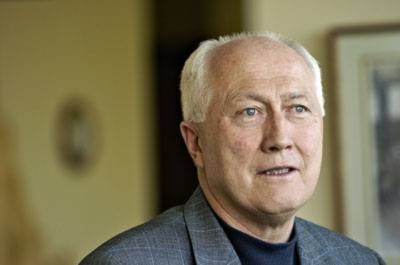The nuclear family has a half-life, according to Statistics Canada.
The once dominant Canadian family —Ma, Pa and a couple of kids — is breaking down.
Today, it is just slightly more prevalent than common-law couples or single-parent families, according to census data released this week.
And its dominance is even slimmer in the Yukon.
About 55 per cent of Yukon families are married couples, 13 per cent lower than the Canadian average.
In fact, the number of common-law families is rising three times faster than married couples.
Today, they make up 23.6 per cent of Yukon families. The Canadian average is 15.5 per cent.
The number of single-parent families in the Yukon increased to 1,725 of 8,335 families — an 11 per cent rise.
One-fifth of all families were single-parent families, five per cent higher than the national average.
Families headed by a single father rose six times faster — about 35 per cent — than those headed by a single mother.
A quarter of all single-parent families are headed by a man, a massive shift from only a decade or two ago, said Statistics Canada spokesperson Sherry Wallace.
“It used to be quite unusual years ago to award custody of children to anyone other than the mother unless they were proven to be absolutely unfit,” said Wallace.
“Now it’s quite common for men to be single parents, or in shared-custody situations.”
Statistics Canada considers a family to be either a married couple or two people living in common-law, with or without children, or a single-parent living with at least one child.
There is a definite increase in single parents in the community and, while the nuclear family is still around, it is not as common as it once was, said the director of a local daycare.
“Two years ago I would have said there is no such thing as the nuclear family —that being a mother, a father and children — but we are seeing more of it now,” said Cindy Defhonaif of Care-A-Lot Daycare.
“And there seem to be more single parents than ever before. As for the number of single fathers, we don’t necessarily see it here, but I see it in the community. There’s more single fathers out there.”
The number of Yukon children under 14 living with their grandparents is three times the national rate.
About 85 children — 1.5 per cent — live with either one or both grandparents.
Similar numbers appear in other provinces and territories with large aboriginal populations, such as Nunavut (2.2 per cent), Manitoba (1.1 per cent) and Saskatchewan (1.3 per cent).
Previous Statistics Canada studies have shown that aboriginal children are more likely to live with their grandparents than non-aboriginals, said Wallace.
“We know from other data that we’ve collected (that) aboriginal people have a higher birthrate and a higher proportion of non-traditional family arrangements, whether that’s more than one census family living together or skip-generation families,” said Wallace.
Thirty Yukon same-sex couples — 10 of which are married — make up half a per cent of all couples in the territory.
This is the first time Stats Can counted same-sex marriages.
Same-sex couples in Nunavut and NWT account for 0.3 and 0.5 per cent, respectively, of all couples in the two other territories. The national average is 0.6 per cent.
Ontario, Quebec and BC — the three largest provinces and the first ones to legalize gay marriage — had the highest percentage of gay couples.
Traditional families are changing and shrinking in the territory and across Canada.
“What is becoming the traditional family is changing,” said Wallace.
“If you think of a phrase like ‘unwed mother’, well that’s not a phrase we use anymore. There are children who are in all kinds of arrangements that are now considered not just accepted, but we will — quite soon I’m sure — be referring to them as traditional.”
Mothers across Canada are having children later in life.
The number of children four years of age or under with mothers between the ages of 40 and 49 rose about two points to 9.4 per cent.
Two-person households accounted for 32.6 per cent of all private households.
One person occupied about 31 per cent of households in 2006. Homes with more than five people made up 7.3 per cent of all households.
For the first time in Canada, there were more couples without children than couples living with children.
Also for the first time, there were more unmarried people aged 15 and over than legally married people — just over one-half had never been married, were divorced widowed or separated.
